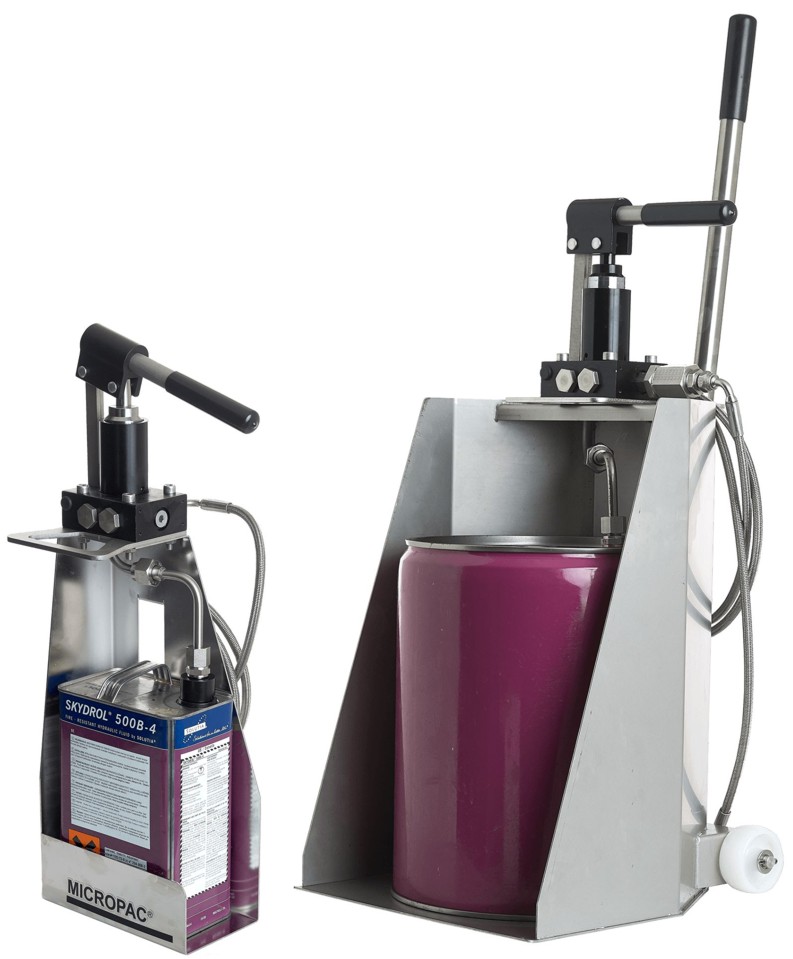After thirty years of manufacturing our Micropac pressure and hydrostatic test pumps, we know a thing or two about leaks.
The easy job is pressure testing your job up to a “proof pressure”, checking that it does not leak or has not permanently deformed and signing it off. Job done!
The science is in diagnosing why something is leaking when it is not obvious. There is always a reason. Look at it calmly and get stuck in.
1. What is actually happening and when? It drops away from 100 bar down to 25 over 5 minutes then holds indefinitely? It holds for days at 100 bar but leaks like a sieve at 25 bar? Sometimes it holds perfectly at high and low and other times it leaks on both. Get it written down and get everybody to agree what they have seen. That does mean everybody! Don’t let anybody keep quiet for whatever reason. If it did work perfectly well by 4.30 each evening, this is something we all need to know about. Ditto, something that always leaks for one person and never for somebody else. Chasing a problem that does not exist or struggling to fight two overlapping problems really can happen and is a total waste of time.
2. Don’t jump to the common fall back excuse of “it’s contamination”. Yes, it may well be, but you need to understand what the “contamination” was actually doing to make the thing leak. And where did it come from? Get the dirt onto a clean room wipe, keep a little swatch in a labelled bag and get your jewellers eye glass or microscope and look what it is. Is it an eye lash with a follicle on it? Is it a hair? Who might have been the owner of said hair? Is it swarf? Is it a whisker of alloy that has not been deburred? Has it gone rusty? Is it rubber? Is it acetal? Yes, do the Sherlock Holmes thing quietly and write the results down.
3. Look for the obvious. After a few minutes, is there a bead of fluid on a threaded joint? Is something deforming?
4. Get the circuit diagram out (if it is a system) and look what possible things could be leaking to tie in with what you are seeing. See whether you can isolate any parts or legs or indeed are there any drain pipes that you can examine for a flow. For example, needle valve A is not leaking if you can see no flow the other side of it. Evidence of leakage could be seeing if any drips appear at the end of a pipe, but remember that if you form a meniscus (dome) of fluid at the end of a hose or on a port, this will be an incredibly accurate optical means of indicating leakage if you can see it getting larger. Your eye will be amazingly accurate in detecting this. End up with a list of possible root causes and how you might test these.
5. Get testing.
What have we learnt?
If something holds at high pressure but leaks at low- it can indicate a shredded seal, a moulding defect in a seal, a poor finish or a hair/other contamination on a seal. You can rationalise this by thinking that the seal just cannot achieve sealing at low pressure but high pressure is really squeezing the seal hard into every corner and against the surface or contamination and just managing.
Conversely, if something holds at low pressure then leaks at high, you could interpret this as a seal “letting go” once there is a certain force prising something open. Maybe a gap is opening up between two parts.
An intermittent problem is tricky. Sometimes you can “catch” a seal awkwardly and a certain person can “mask”a defect. We seem to have seen this many times. For example, a check valve is defective but if you shock it violently, you can persuade it to seal. This vital fact should be written down in “problem as reported” but the valve is still defective. Probably a seal, finish or contamination issue. Maybe even a design issue where something is getting cocked over rather than reseating nicely. I know that old British cars needed little tricks to make them do this or that, but it is a very bad way to work, particularly if there is something actually defective that can be remedied once you find it.
As with any testing, plan what you are going to do, record the results, interpret the evidence and come to some conclusions. Hopefully you will realise what the source of the leak is.
Remember that for analysis or diagnostic work, don’t go “mending” or changing more than one thing at a time, as otherwise you will not know what the problem was. This is very bad news.
Nailing down a leak is for thorough and thoughtful people, not fast and furious folks. And people who can’t stop talking while I am thinking drive me mad as well!





Leave A Comment